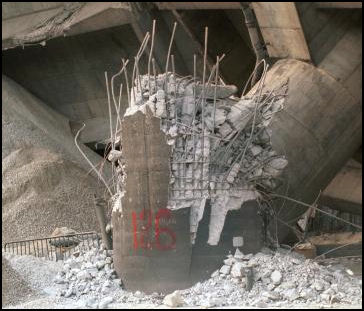Traditional Japanese housing design. In the older parts of Kobe, many of the houses have heavy tiled roofs that are supported by wooden beams (usually at the corners). The walls offer little to no structural support at all to these. As a result the roof falls and crushes all below in a pancake collapse.

Breakage of gas lines and use of charcoal braziers. The use of charcoal cookers in some houses started fires during and after the earthquake. Ruptured gas lines increased the scale of the fires as the night progressed.
Firefighters were unable to successfully fight the fires due to broken water pipes and/or reach the areas due to blocked roads.

Despite being considered adequate for earthquakes when constructed, some of Kobe's overhead freeways collapsed. This was put down to inadequate steel reinforcing of the pylons that supported them.


The dock area was built on reclaimed land in the harbour. The earthquake redistributed the sand and water that the docks were sitting on, resulting in significant liquefaction and subsidence.

As described in the figure below, the soil sinks and the water rises. As the soil sinks the subsidence occurs, resulting building damage ans water levels changing.

No comments:
Post a Comment